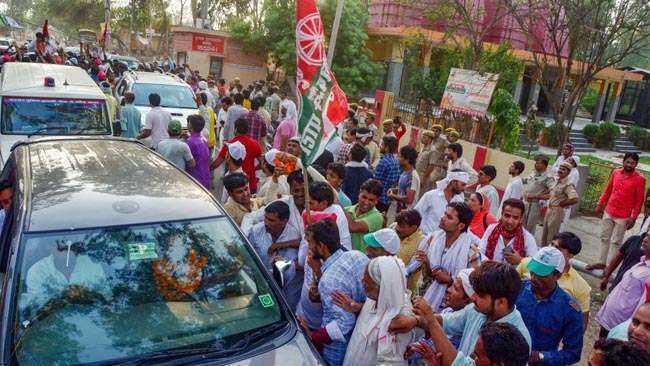A victory over the BJP in Kairana, everyone agreed before the election, would demonstrate that a grand coalition strategy could defeat the most extreme forms of communal polarisation.
New Delhi, June 1:
The importance of the defeat of the Bharatiya Janata Party (BJP) in the recently concluded Kairana by-election is not lost on the party. A bevy of senior ministers from the BJP, chief minister Yogi Adityanath, and Prime Minister Narendra Modi all campaigned for this by-election. ( Modi technically launched a project after the last day of campaigning in nearby Baghpat, but the speech he gave clearly demonstrates Kairana was on his mind.)
A grand coalition of “BJP opposition parties” — the Congress, the Rashtriya Lok Dal (RLD), the Samajwadi Party (SP), and the Bahujan Samaj Party (BSP) — banded together to contest against the BJP this time.
Kairana is right next to Muzaffarnagar, the location of the riots between the Jat and Muslim communities that propelled the BJP to historic victory margins in the area during the 2014 national election. In 2014, the BJP won by a whopping 2.4 lakh votes over the nearest party in Kairana.
Amazingly, the coalition decided that the RLD, a Jat-dominated party, would field a Muslim candidate, trying to bridge the divide between two communities that clearly do not get along.
In stark contrast to the BJP, the grand coalition ran a more demure campaign buttressed by local RLD leaders while big names in the coalition like Akhilesh Yadav and Mayawati barely even acknowledged an election was taking place.
A victory over the BJP in Kairana, everyone agreed before the election, would demonstrate that a grand coalition strategy could defeat the most extreme forms of communal polarisation. When all was said and done, the coalition garnered 51.2% of the vote and defeated the BJP by more than 40,000 votes.
This is not just a blip for the BJP. It’s a part of a more worrying trend. Like Kairana, the grand coalition bested the BJP in recent by-elections in Gorakhpur and Phulpur, widely perceived to be BJP strongholds.
Many analysts (including this one) focused on the BJP’s superior performance in 2017, almost mimicking its performance in 2014. The BJP won 71 of the 78 constituencies it contested in Uttar Pradesh in the 2014 national election, with a vote share of 42.3%. It won 312 of the 378 seats in contested in the 2017 assembly elections in the state with a 39.7% vote share.
What was lost in this discussion, however, was that the BJP’s main opposition parties gained a lot of vote share in 2017 as compared to 2014 in UP.
This figure displays the combined vote shares for the parties in the grand coalition for Kairana and two recently concluded by-elections, in Gorakhpur and Phulpur, for the years of 2014, 2017, and 2018 — corresponding to a national election, a state election, and a by-election, respectively. In Kairana, for instance, the parties in the grand coalition gained almost 10 percentage points between 2014 and 2017. As the combined vote shares for the grand coalition swelled in 2017, the strategy of “opposition unity” became eminently more winnable in subsequent elections.
This disjuncture between 2014 results and recent election results is not just a UP phenomenon. In the recently concluded Karnataka state election, the BJP won 104 of the 222 seats contested with a 36.2% vote share. Had it performed at 2014 levels, it would have won 132 seats with a 43% vote share.
No doubt the BJP will comfort itself with the fact that state elections and by-elections are different from national elections. There is some truth to this — the recent by-elections saw much lower turnout than the same constituencies in 2014.
The Kairana, Gorakhpur, and Phulpur by-elections saw 58%, 47%, and 37% turnout, respectively, while these constituencies saw 73%, 55%, and 50% turnout, respectively, in 2014.
But, nonetheless, the BJP must be worried that it can no longer ride on the coat tails of Modi and the party’s 2014 performance. The question remains: Will Narendra Modi be able to regain his magic before the upcoming national polls?
Courtesy: Hindustan Times




